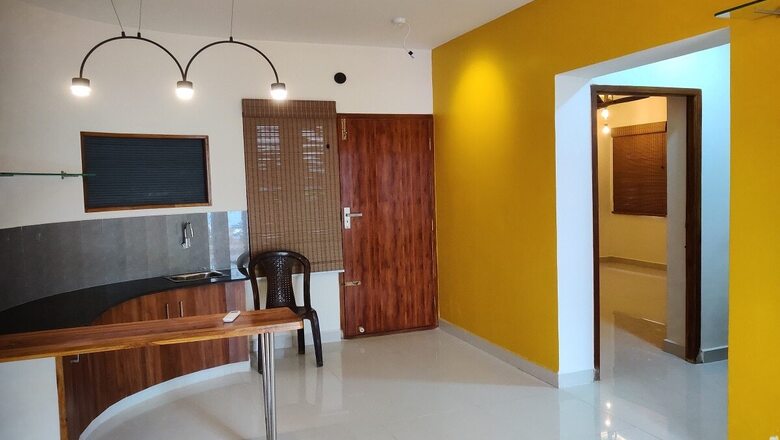
views
The Indian Institute of Technology (IIT) Madras now has what it claims to be India’s first 3D printed house. The building was inaugurated by Finance Minister Nirmala Sitharaman in virtual mode. The building is built by a start-up founded by IIT-Madras alumni – Tvasta Manufacturing Solutions.
With a built area of about 600 sq.ft., the single-story home has a functional space comprising of a single bedroom, hall, and kitchen, with the entire ensemble, is designed, developed, and realized by concrete 3D printing technology. The house was developed in collaboration with Habitat for Humanity’s Terwilliger Center for Innovation in Shelter, the IIT informed.
The concrete 3D printing technology is a ‘Ready-to-Implement Methodology’ with no lead time on manufacturing, which significantly reduces the construction time. This ‘Made In India’ technology has the potential to change the term ‘building’ to ‘printing’ in the near future.
Tvasta Manufacturing Solutions – the company created by IIT-Madras alumni – is part of the new incubator of the Ministry of Housing and Urban affairs established at IIT Madras called ‘ASHA Incubator’. Tvasta was co-founded by three IIT Madras alums of the 2016 batch – Adithya VS from dept of mechanical engineering who is now Chief Executive Officer, Vidyashankar C from department of electrical engineering who is the Chief Operating Officer, and Parivarthan Reddy from the department of mechanical engineering who is Chief Technology Officer at Tvasta.
FM Sitharaman who inaugurated the project said, “India definitely needs such solutions which do not require much time. This technology enables building a 3D printed house in five days. With the Prime Minister’s goal of ‘Housing for All by 2022,’ we have a huge challenge before us. A huge challenge of meeting that deadline and making sure that people who need houses get it at an affordable price. The Government incentives for that are available.”
“Conventional housing requires timing, material, logistics, transporting of material, and so on. But if this technology can produce houses in different locales at five days per house, it would not be a big challenge to build 100 million houses by 2022,” she added.
Read all the Latest News, Breaking News and Coronavirus News here. Follow us on Facebook, Twitter and Telegram.











Comments
0 comment